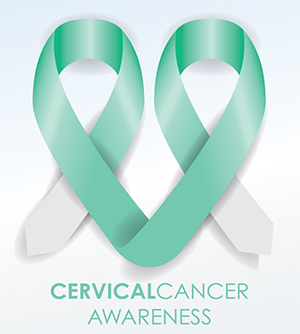By Bianca Smith, DO
One of the most common questions I am asked by friends, strangers in line, and nurses I work with, is, “How often do I REALLY need to get a pap smear?”
Good question! Let me get out my flow sheet. It actually can be so complex a question, for gynecologists there IS an app for that. There are also charts and flow sheets. The short answer? Make sure you show up for your annual well woman exam, and we will worry about it for you. If you would like to know why you are yearly asked to take off everything other than your socks to sit in a cold room wearing only paper, the rest of this article is for you.
We live in an age of information at the tip of our fingertips, where knowledge about our bodies is accessible, and patients have become educated consumers of health care. We are now consumers of medicine. Like when we take our car to get the oil changed, and the mechanic recommends the filter be changed and new transmission fluid in addition to oil every time we show up. We want to know what is important, and what is unnecessary. Your pap smear is NOT a worthless test. Since
the pap smear was introduced in the United States, the number of women diagnosed with cervical cancer has gone down by more than 50%. (1) That means that the number of women who are diagnosed with this difficult disease, have needed surgery, or radiation and chemotherapy, has been cut in half. Fifty percent fewer families are affected by cervical cancer. That is because this is not a test about diagnosing cancer, this is a test designed to catch the early abnormalities so that that
cancer doesn’t even have a chance to start. The number of deaths caused by cervical cancer are even lower still. The cost to the consumer for a pap smear is relatively small, and is covered by most insurance companies.
What causes abnormal pap smears?
Human Papilloma Virus, known as HPV, is a virus which infects the cells of the cervix and in some cases lead to uncontrolled growth of cells in the cervix. If the infection lasts more than a few years, these changes can lead to pre-cancer
or cancer. HPV is easily spread by sexual skin to skin contact, and as many as 80% of sexually active women will have HPV in their lifetimes. Thankfully, the majority of these infections the body will cure. People younger than 21 are likely to cure themselves very quickly, people between 21-29 clear infections slightly less well, and after age 30 HPV infections are cleared by the body somewhat slower. It is almost always these infections that last 2-3 years which start causing changes in the cervix on a cellular level. This can lead to changes in the cytology (or the cells) of the cervix. (1)
HPV is divided into two types: 1. Oncogenic (types that are able to cause cancer) and 2. nononcogenic (types that aren’t able to cause cancer). The oncogenic (or high-risk) type of HPV are capable of causing cancer, but this is more likely in
certain situations, like smoking cigarettes, a lowered immune system which can happen with chronic steroid use or HIV.
The quicker a person’s body can fight off the high risk HPV virus, the less likely there will be any abnormal changes to
the cells of the cervix. The HPV virus damages parts of the cell in the cervix which controls how new cells grow, and corrects abnormal growth. Abnormal growth is how you can get changes that can lead to cancer. Only about 10-20% of HPV infections last 1-2 years, but this increases the risk of high grade (very abnormal) cervical cells. Typically it takes 3-7
years for HIGH GRADE changes to become cancer, but if untreated very abnormal cells have a high risk of turning into cancer. Low grade (or mildly abnormal) pap smears need to be tested more frequently to make sure cells go back to normal. Your doctor should help guide you through the diagnosis and plan for an abnormal pap smear. (2)
Cytology is the way the cells of the cervix are evaluated. During the speculum exam in your doctor’s office, a gentle scraping of the cervix collects cells that are loosely attached to the surface. Those cells are sent to the pathologist who looks at cells from the cervix under a microscope. At the same time, the cells collected can be tested for the high risk type of HPV.
How often is a pap smear needed?
Research has been done to find the best space of time between pap smears to catch a high number of abnormal cervical cells, but keep the number of people diagnosed as abnormal who really are normal (false positive tests) low. Research showed that for LOW RISK women:
1.The ideal age to start Pap smears is age 21
2. Between age 21-29 only cytology (cells from the surface of the cervix) will be collected for the Pap smear, but no HPV test
a) The number of young women between age 20-30 with HPV infection is so high, and it is so likely that their body will fight it off quickly, that HPV testing would cause more harm than good.
3. Between ages 30-65 you can either:
a) Test cytology only every 3 years, or
b) Test both cytology and HPV every 5 years
c) Both have been seen in research to have similar detection rate and survival
These screening criteria are only for women who have normal pap smears, who do not have a weak immune system or HIV. Call your doctor right away if you have irregular bleeding after sex, or periods that come twice a month, or last longer than they should.
As doctors we use research to guide what we do, but we also use our eyes, our hands, and our minds to treat. Often I want to test patients more often than the research recommends, because I am worried they are more at risk that the average woman, or their exam is slightly abnormal, or the fact that they might not have access to healthcare in the years to come. There was a research study that used a computer program to predict the risk of 40 year old women developing cervical cancer within the next 10 years. Women who were tested for HPV and cytology every 3 years had a risk of .39%, and those who were tested every 5 years had a .61% risk of developing cervical cancer within 10 years. (3)
Because the risk of cancer is slightly higher when screened every 5 years, I usually offer to do a pap smear every 3 years. It is the fact that it typically it takes 3-7 years for high grade abnormal pap smears to become cancer, that I prefer to screen every 3 years. Pap smears not only save lives, they save people from more extreme surgery and possibly radiation and chemotherapy.
Even if your doctor does pap smears every five years, I believe strongly that you should go to the gynecologist every year
for a well woman exam. You can make sure you are on track if you have had abnormal pap smears, and you can also be examined for breast lumps, as well as checked for pre-cancer of the vulva or vagina. Cervical cancer is not completely preventable, but with regular gynecology visits it is so much less likely. The screening is not meant to prevent every case of cervical cancer, and I want the women around me to make sure they are making their health a top priority. Hopefully you can see that cervical cancer screening isn’t just the new filter or change in transmission fluid, it is the oil change. Make sure you come in for maintenance so you can keep on trucking for years to come.
References
1. www.uptodate.com/contents/cervical-cancerscreening-beyond-the-basics, http://www.acog.org/Patients/FAQs/Cervical-Cancer-Screening
2. www.acog.org/Patients/FAQs/Cervical-Cancer-Screening
3. Howlader N, Noone AM, Krapcho M, GarshellJ, Miller D, Altekruse SF, et al, editors. SEER cancer statistics review, 1975-2012. Bethesda (MD): National Cancer Institute; 2015. Available at: seer.cancer.gov/ csr/1975_2012. Retrieved September 2, 2015. www.acog.org/Patients/FAQs/Cervical-Cancer- Screening

















![Shred-A-Thon to take place tomorrow An image of shredded paper. [Pixabay]](https://www.inmaricopa.com/wp-content/uploads/2024/03/shredded-paper-168650_1280-100x70.jpg)
